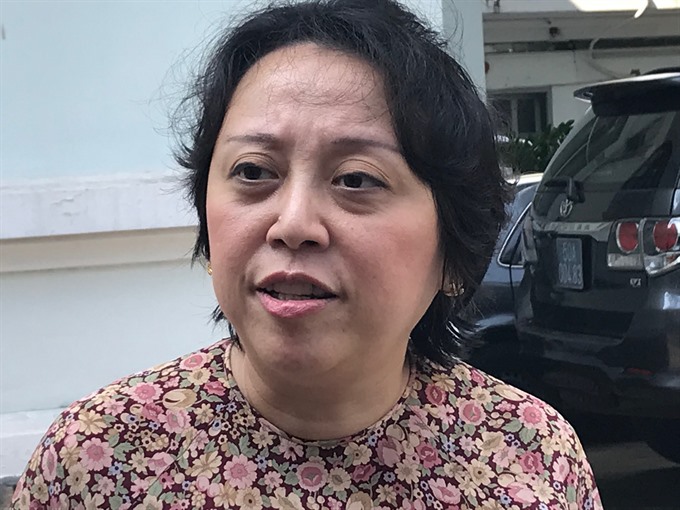 Society
Society

Phạm Khánh Phong Lan, head of the HCM City Food Safety Management Board, speaks to Việt Nam News about plans for 2019 and increasing the use of IT in tracing product origins.
 |
| Phạm Khánh Phong Lan, head of the HCM City Food Safety Management Board.–VNS/Photo.Gia Lộc |
Phạm Khánh Phong Lan, head of the HCM City Food Safety Management Board, speaks to Việt Nam News about plans for 2019 and increasing the use of IT in tracing product origins.
In managing food safety, what is the board’s focus this year?
The board will continue to strengthen inspection of food production, processing, distribution, and import-export establishments. This year it plans to set up 12 teams of inspectors to carry out inspections of 8,187 establishments around the city. It will also carry out surprise inspections of establishments reported to violate food safety and hygiene regulations.
Last year more than 3,967 establishments were inspected, and violations were discovered at 764. Nearly VNĐ7.4 billion (US$318.5 million) (one figure is wrong) in fines was collected.
Compared to 2017 the number of violating establishments was slightly down. This showed that awareness of food safety and hygiene had improved among owners of establishments and the public.
The board will continue to co-operate with provinces which supply food to the city to set up more food safety chains to increase the amount of safe food in the market.
Last year it provided 272 certificates of food safety chains to 202 farms in the city and the provinces of Đồng Nai, Bình Dương, Tiền Giang, Long An, Lâm Đồng, Hậu Giang, and others.
These chains supplied to the city more than 104,438 tonnes of vegetables, fruits, meat, and seafood last year, an increase from 54,486 tonnes of safe foods supplied to the city in 2017.
However, the volume of safe food supplied last year was still lower than the demand.
How does the board carry out projects to trace product origin it bequeathed from the city Department of Industry and Trade?
The board is continuing what the department did. It will strengthen IT application in tracing products such as creating electronic records for products which are first exported and then consumed in the domestic market.
As of now it has provided codes to 16 farms and establishments for the slaughter and distribution of chickens, pigs and eggs.
It is managing and tracing pork from 1,544 farms that is transported to 48 slaughterhouses and sold at the two wholesale markets of Hóc Môn and Bình Điền and 527 supermarkets and shops.
It also carries out other projects for tracing the origins of chickens and eggs.
Tracing the origins of these products will be trialled at supermarkets and traditional markets under a project for building markets and ensuring food safety.
It is difficult to expand too wide throughout the city because distribution systems and breeding farms are not suitable for this. It takes time to expand.
What difficulties does the board face in enforcing food safety and hygiene?
It faces a shortage of personnel. Although all food safety and hygiene inspectors from the Departments of Health, Agriculture and Rural Development and Industry and Trade were transferred to the board when it was set up in March 2017, many of them quit.
So it needs 43 more people to perform its tasks. It wants to recruit new graduates studying food safety at city universities. But it is not allowed to recruit more personnel because of the current requirement to reduce the number of civil servants and government workers.
Red tape related to fining and destroying unsafe foods cause difficulties for the board’s inspectors to carry out their tasks to ensure food safety. This also enables violators to flee when the board issues a fine.
These administrative procedures force the board to spend more on food storage while it waits for test results to confirm the food is unsafe. It also has to pay for the cost of destroying the food because the violators have fled.—VNS




